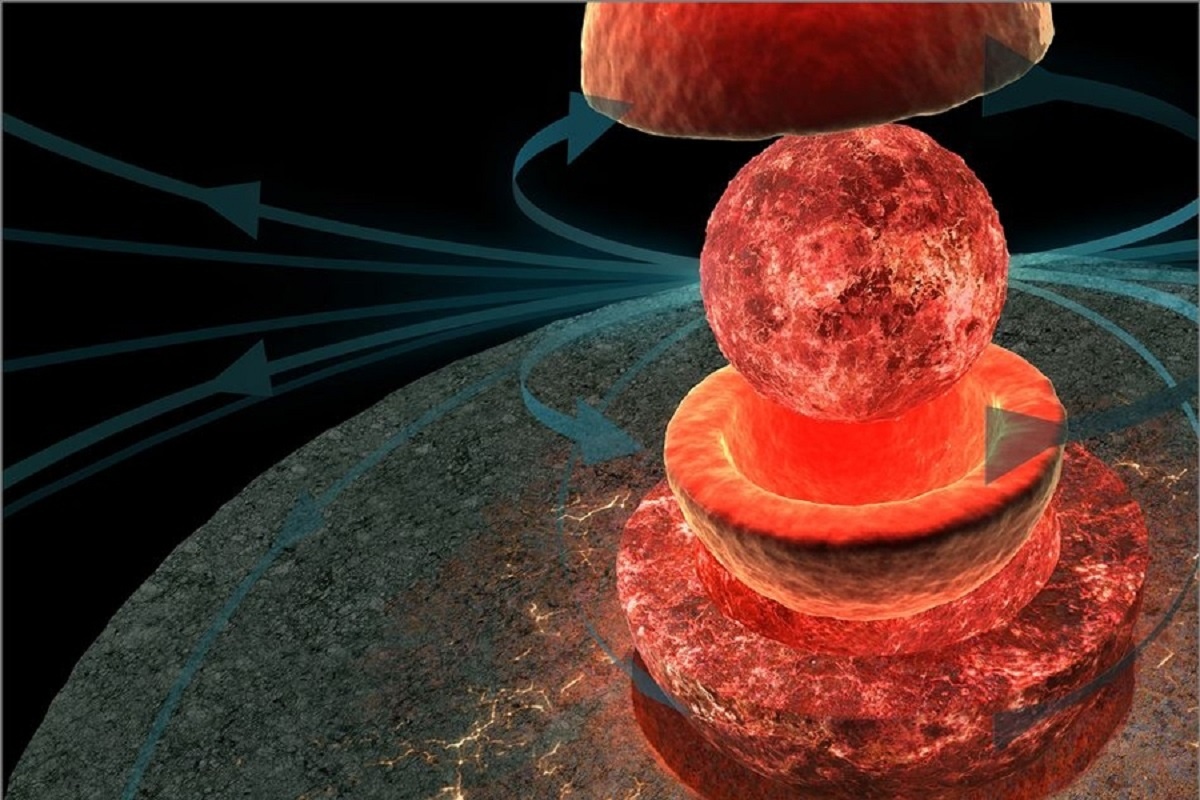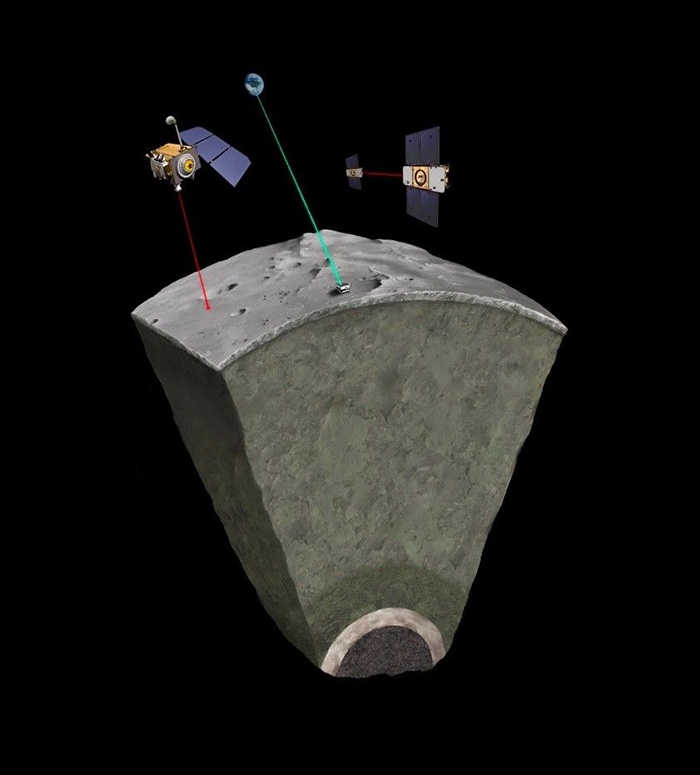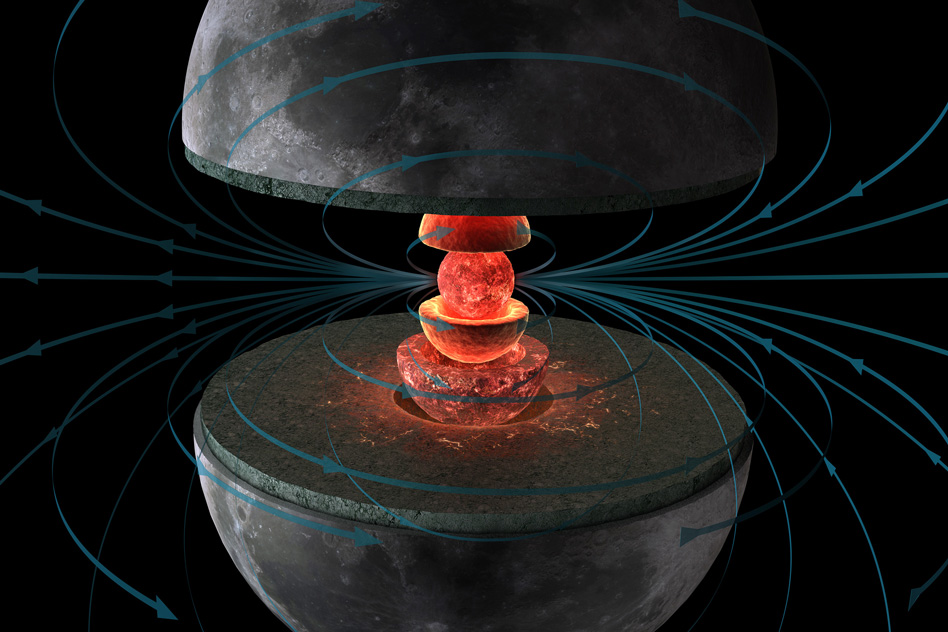Some fifty years ago, the Apollo Program sent the first astronauts to the Moon. In addition to the many science experiments they conducted on the surface, the Apollo astronauts brought back samples of lunar rock for analysis. The Soviet Luna program sent several robotic missions to the Moon around the same time that conducted sample-return missions. The examination of these rocks revealed a great deal about the composition of the Moon and led to new theories about the formation and evolution of the Earth-Moon system.
For example, analysis of the rocks revealed that the Earth and the Moon are similarly composed of silicate minerals and metals. This led to theories that the Moon’s interior is similarly divided into a silicate mantle and crust and a metallic core. However, many aspects of this theory, like the structure of the core (solid or molten?), have been debated for decades. According to new findings by a team of French scientists, it is now a scientific certainty that the Moon’s innermost region consists of a solid inner core surrounded by a molten outer core (just like Earth’s).

The research was led by Arthur Briaud, a post-doctoral researcher at Observatoire de la Cote d’Azur. He was joined by researchers from the Centre National de la Recherche Scientifique (CNRS), the Institute for Celestial Mechanics and Calculations (IMCCE), the Université Côte d’Azur, the Côte d’Azur Observatory, Sorbonne Université, the Paris Sciences et Lettres University, and the Paris Observatory. The paper that describes their findings, “The lunar solid inner core and the mantle overturn,” recently appeared in the journal Nature.

New research has confirmed the existence of the Moon’s solid inner core. Credit and ©: Géoazur/Nicolas Sarter
Based on the analysis of the Apollo Moon rocks and other lunar samples, scientists developed seismological models that provided the first records of the Moon’s inner structure. These models showed decreased seismic wave velocities at the core-mantle boundary, which was the first hint that the lunar core might be similar to Earth’s. Unfortunately, the resolution of the seismic data prevented a clear picture of the Moon’s innermost structure, which included the presence of a solid core and the movement of mantle material over time.
Roughly twenty years ago, various methods were used (like the Moon’s rotation) to confirm the presence of a fluid outer core, but the inner core remained undetectable due to its small size. For their study, Briaud and his colleagues relied on geophysical and geodesic data from multiple space missions and lunar laser ranging. They combined this with Monte Carlo and thermodynamic simulations that explored different interior structures. The results were consistent with a solid inner core measuring about 500 km (~310 mi) in diameter, roughly 15% of the total size of the Moon.
Their results also indicated that the inner core has a density close to that of iron, likely iron-nickel (same as Earth’s). In addition, their results also shed light on the impact of mantle convection during the Moon’s evolution, known as “lunar mantle overturn.” This phenomenon, where the lower and upper layers of a mantle reverse positions due to the lower layer being less dense, explains the presence of iron-rich elements at the Moon’s surface. As they explain, this material could have risen to the surface, producing volcanic rocks that were deposited in the lunar crust.
These same materials may have been too dense compared to the surrounding material and subsequently sank back down to the core-mantle boundary. The researchers also estimate that this occurred during the first billion years of the Solar System (ca. 4.6 to 3.6 billion years ago). Therefore, their results help constrain the timeline of major events in the Moon’s evolutionary history, including the Late Heavy Bombardment and the disappearance of the Moon’s magnetic field (which was once 100 times more powerful than Earth today).

New measurements of lunar rocks have demonstrated that the ancient Moon generated a dynamo magnetic field in its metallic core. Credit: Hernán Cañellas/Benjamin Weiss
Most of all, this work resolves a debate that has remained open for decades and further demonstrates the similarities between the Earth and Moon. It also significantly contributes to our understanding of the Solar System and its evolutionary history. Once again, it has also helped refine the timeline of major events, not the least of which is the impacts that distributed water (and possibly the ingredients of life) to Earth and the inner Solar System. If the Moon could be considered a geological record of our Solar System (and it certainly can), a crucial gap has just been filled.





